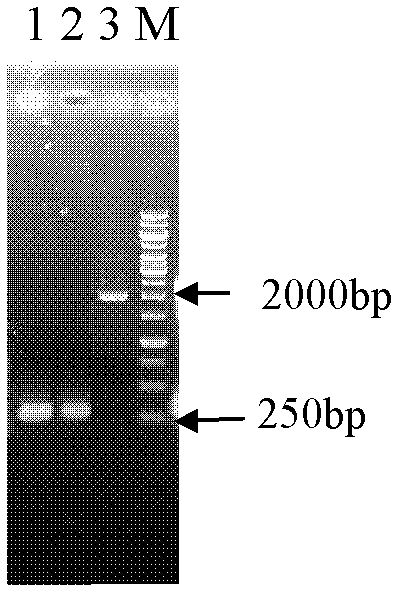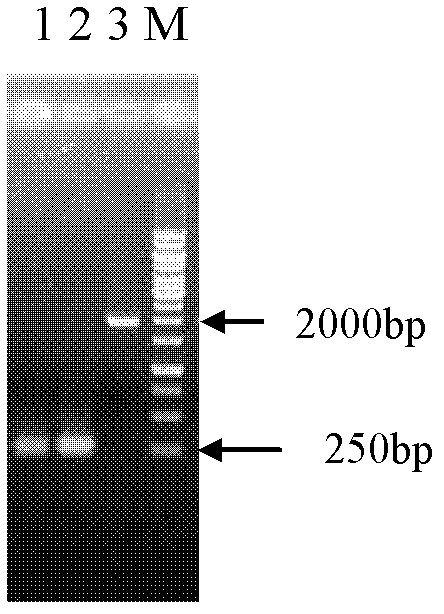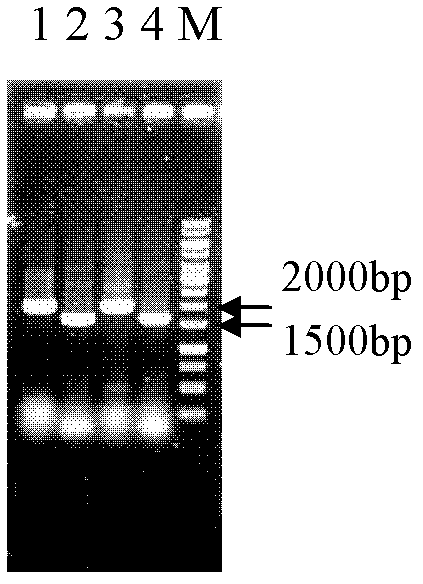Recombination saccharomyces cerevisiae strain secreting and expressing tricoderma reesei exoglucanase I and application thereof
A technology of Saccharomyces cerevisiae strains and exoglucanase, applied in the direction of fungi, microorganism-based methods, microorganisms, etc., can solve many problems such as
- Summary
- Abstract
- Description
- Claims
- Application Information
AI Technical Summary
Problems solved by technology
Method used
Image
Examples
Embodiment 1
[0048] Example 1: Preparation of Saccharomyces cerevisiae strain with improved ability to secrete heterologous proteins with large molecular weight and rich disulfide bonds: Saccharomyces cerevisiae B SX010
[0049] 〖1〗Knockout of protein missorting pathway receptor gene Sc-VPS10 involved in protein transport
[0050] Methods as below:
[0051] (1) PCR amplification of the recombination arm of the Sc-VPS10 gene: using the Saccharomyces cerevisiae CEN.PK102-3A genome as a template, using primer VPSL1 and primer VPSL2 to amplify the 200bp recombination arm 1 ( figure 1 ), with primer VPSL3 and primer VPSL4, amplified to obtain the recombinant arm 2 of 200bp ( figure 1 );
[0052] Wherein, the above-mentioned VPSL1, VPSL2, VPSL3 and VPSL4 primer sequences are:
[0053] VPSL1: 5'-ACAGCATGATGCAACAGCT-3'
[0054] VPSL2: 5'-TATTAAGGGTTGTCGACCTGCACTTCAGGGCTTTTCCA-3'
[0055] VPSL3: 5'-TGATATCAGATCCACTAGTGTAGATAATTCCATATACTTTTT-3'
[0056] VPSL4: 5'-CCGTAACATATGATATATCC-3'
[00...
Embodiment 2
[0145] Example 2: Secreted expression of Tr-Cel7A in Saccharomyces cerevisiae
[0146] Methods as below:
[0147] (1) Construction of secretion expression vector pJCF
[0148] ①The Tr-cel7A gene fragment with Flag tag was obtained by whole gene synthesis ( Figure 12 );
[0149] ②Construction of the recombinant plasmid pJCF: pass the Tr-cel7A gene fragment (nucleotide as shown in SEQ ID NO.1) with the Flag tag obtained in step ① through Xba I, and pass the empty plasmid pJFE2 (Peng et al., Metab Eng 2012, 14 (1): 9-18.) Digested with Xba I ( Figure 13 ), purified the digested product with a PCR product recovery kit, treated pJFE2 digested with Xba I with CIAP, ligated with T4 ligase, reacted at 16°C for 12 hours, and obtained the recombinant plasmid pJCF( Figure 14 );
[0150] (2) Recombinant strain construction:
[0151] ① transformation of Saccharomyces cerevisiae with recombinant plasmids: respectively transform 25 microliters (1) Partial steps ② Gained recombinant ...
PUM
 Login to View More
Login to View More Abstract
Description
Claims
Application Information
 Login to View More
Login to View More - R&D
- Intellectual Property
- Life Sciences
- Materials
- Tech Scout
- Unparalleled Data Quality
- Higher Quality Content
- 60% Fewer Hallucinations
Browse by: Latest US Patents, China's latest patents, Technical Efficacy Thesaurus, Application Domain, Technology Topic, Popular Technical Reports.
© 2025 PatSnap. All rights reserved.Legal|Privacy policy|Modern Slavery Act Transparency Statement|Sitemap|About US| Contact US: help@patsnap.com



